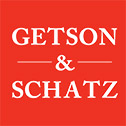26 Nov EB-1A Petition Approved for Fuel Cell Researcher
Getson & Schatz successfully represented a foreign national in petitioning for EB-1A classification as an alien with extraordinary ability in sciences. The client was among the small percentage of researchers at the very top of the field of process analysis of polymer electrolyte membrane (PEM) fuel cells. The EB-1A immigration classification applies to individuals with extraordinary ability in the sciences, arts, education, business or athletics. Per INA 203 (b)(1)(A) the individual must plan to continue to work in their area of extraordinary ability and must substantially benefit prospectively the United States. The client was employed in lawful H-1B status and intended to continue his full time employment in granted permanent resident status. The client was conducting research in the field related to modeling component and voltage degradation in PEM fuel cells. His research findings had led to multiple improvements in the development of PEM fuel cells as a usable energy conversion device that had far reaching implications for environmentally friendly energy efficiency in the United States.
Per INA Section 203 (b)(1)(A), the individual must demonstrate extraordinary ability in the field which has been demonstrated by sustained national or international acclaim and whose achievements have been recognized in the field through extensive documentation. 8 C.F.R Section 204.5(h)(3) outlines ten criteria, at least three of which must be satisfied, for an individual to establish the sustained acclaim necessary to qualify as an individual of extraordinary ability. Our Philadelphia attorneys compiled and submitted evidence in the following criteria to establish the sustained acclaim needed for EB-1A classification.
1. Receipt of lesser nationally or internationally recognized prizes or awards for excellence in the field of endeavor: a certificate of award for the client was included with the petition, along with information regarding the criteria to receive the award, in support of this criterion.
2. Membership in associations in the field for which classification is sought, which require outstanding achievements of their members: the client was elected a full member of an organization which required noteworthy achievement in research for election to full membership. A membership letter was included as evidence of this requirement.
3. Published material in professional or major trade publications or other media: a citing articles summary for the client’s publications was provided showing that his publications had been cited/discussed 68 times by numerous investigators around the world in top rated international journals; this demonstrated the significant impact of the client’s work in the international scientific community. Additionally two letters discussing the use of the client’s work were included as additional evidence.
4. Participation, either individually or on a panel, as a judge of the work of others in the same or an allied field of specialization: the client was a peer reviewer for three of the top rated international journals in his field. Since only those with expertise and distinguished reputation in the field are asked to judge the work of others, three review articles from the client were included in support of this criterion.
5. Original scientific, scholarly, artistic, athletic or business-related contributions of major significance in the field: reference letters submitted by internationally renowned independent experts in the field, as well as leaders in the field were included, evidencing recognition of the client’s original scientific research contributions. Presentations given by the client and companies that had requested information on the client’s work were also included as additional evidence.
6. Authorship of scholarly articles in the field, in professional or major trade publications or other major media: 8 articles authored by the client were included with the petition in support of this criterion.
All the evidence submitted provided support for the claim that the client was one of the small percentage of researchers at the very top of the field of process analysis of PEM fuel cells. Therefore showing the client qualified for EB-1A classification. Based on this information, the USCIS approved our client’s EB-1A application, finding that he met at least 3 of the enumerated EB-1A statutory categories and met the high level of achievement required for EB-1A approval.

